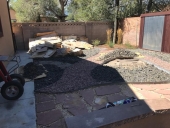









 7
7




List of Bryant RedHawk's Epic Soil Series Threads We love visitors, that's why we live in a secluded cabin deep in the woods. "Buzzard's Roost (Asnikiye Heca) Farm." Promoting permaculture to save our planet.




 2
2




 2
2




Blog: 5 Acres & A Dream
Books: Kikobian Books | Permies Digital Market
 5
5




Leigh Tate wrote:Danrley, welcome to Permies! I'd say Dr. Redhawk's post above (https://permies.com/t/62679/true-toxins-soil-won-fruit#534857) gives excellent advice on how to do it safely.
Visit Redhawk's soil series: https://permies.com/wiki/redhawk-soil
How permies.com works: https://permies.com/wiki/34193/permies-works-links-threads
 6
6




"You must be the change you want to see in the world." "First they ignore you, then they laugh at you, then they fight you, then you win." --Mahatma Gandhi
"Preach the Gospel always, and if necessary, use words." --Francis of Assisi.
"Family farms work when the whole family works the farm." -- Adam Klaus
 3
3




Even arsenic, the poison of choice for many fictional murderers, is now close to qualifying as a micronutrient in animals. It seems that arsenic has a role in the metabolism of the amino acid methionine and in gene silencing (Uthus, 2003). Other work suggests that it has a positive interaction with the more important micronutrient selenium (Zeng et al, 2005).
 4
4




John Wolfram wrote:Just to make things even more confusing, some of the things being called toxins in this thread may actually be essential micronutrients.
Visit Redhawk's soil series: https://permies.com/wiki/redhawk-soil
How permies.com works: https://permies.com/wiki/34193/permies-works-links-threads

|
Seriously Rick? Seriously? You might as well just read this tiny ad:
The new purple deck of permaculture playing cards
https://www.kickstarter.com/projects/paulwheaton/garden-cards
|







